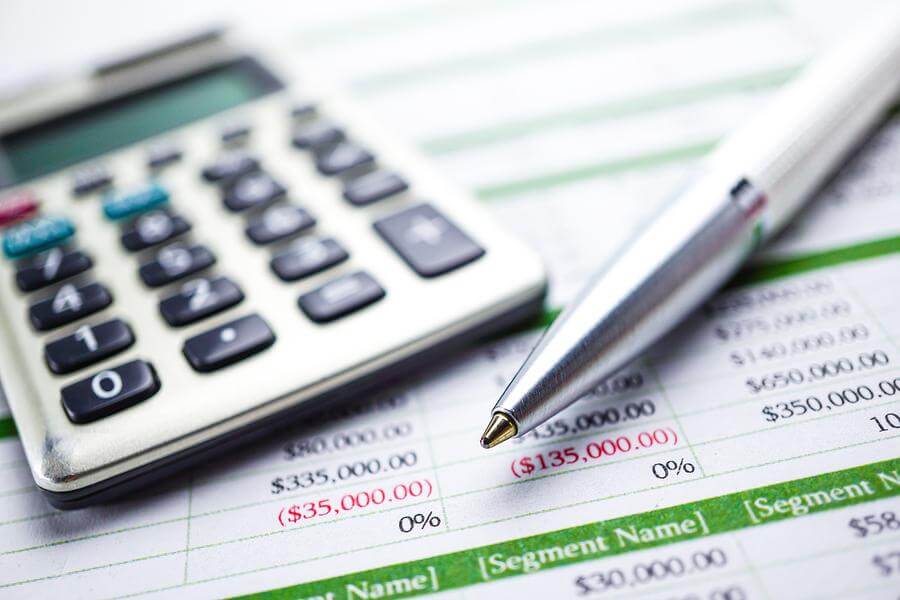In the overall banking and financial crisis in recent days, around 80% of the consumers are knowledgeable enough when it comes to the topic of overdraft fees. A wide number of institutions have already come under the radar of investigation due to their potential problems regarding overdraft fees. The consumers are all interested now in knowing whether or not their banks or the credit unions will be involved in the unethical game of charging overdraft fees. If you are worried about charging of overdraft fees by your bank, feel free to contact Shamis & Gentile, P.A. for all kinds of help.
A huge number of banks under potential investigation for the issue of overdraft fees
Most of the people are knowledgeable enough and knows it very well that in recent days, a couple of financial institutions already came under the radar of investigation. Among such institutions, Credit Unions Credit Union is one of those that are being questioned for their overdraft practices. The practice of overdraft fees comes with charging the consumers heavy fees when the bank account balance of the consumers turns into minus.
According to the website description of Credit Unions, overdraft line of credit provides enough confidence and safety which is required for the overdraft perfection on the checking accounts. Their overdraft fees use the payments based on the actual used amount and not on the amount of total overdraft line. However, in many of the cases, the game of overdraft needs to be stopped.
Many of the consumers are confused with the terms such as available balance and reordering transactions, actions that are being used as an explanation for charging an amount of overdraft fees. Just for instance, the available balance which is shown in your mobile banking account doesn’t always tend to say that all your pending transactions are visible for you.
The gimmick of available balance
In this world of today, mobile banking is something that has completely changed the overall scenario of the bank world. However, it might happen that the available balance which is displayed on your mobile app might not be the exact available balance. In actual, there are various moving parts that are taking place within your own account. What leads to overdrafts are the assumptions of the amount of money that does not even exist.
Another point is also being investigated which includes the reordering of the transactions in actual order that leads to the maximum collection of overdraft fees. The reordering of transactions happens when a bank or a credit union processes the transaction from your account in a different order than the actual order in which they were actually made. This whole thing can also happen with the withdrawals from ATM or even with checks.
When you make a purchase that overdraws your account, you will be charged with overdraft fees. All of these fees compound. As a consumer, you will need to pay the interest on such fees as these fees await payment. The interest will start to accumulate as soon as the amount gets owed. In case you have any query regarding overdraft fees, you can contact Shamis & Gentile for further information.
How the overall process of overdraft works?
According to the reports from Smart Asset, either of the two things will happen whenever a consumer attempts to spend money from their accounts which are insufficiently funded. The first thing that takes place is that the payment will be returned to your bank account or will be declined. This is the most common scenario. In this case, the bank might charge the consumer with NSF or non-sufficient fees. The second thing would be that the merchant or the vendor where the transaction failed might levy a fee for the transaction being cancelled. NSF fee is similar to the overdraft fee.
It is also an evident fact that the bank might also charge a very rate of interest in case they charge the exact same fee for the NSF transactions as they would have done for the overdraft as well. Due to this reason, most of the consumers are turning towards another option which is the overdraft program in which the fees will be charged directly from the consumers. This is applicable when your account is having insufficient funds and the bank covers the overall cost of the transaction. The fees will be charged from you at a flat rate for doing so. The usual rate of overdraft fees ranges between $27 and $ 34.
Join a Bank Overdraft Fee Class Action Lawsuit Investigation
If you were charged multiple bank overdraft fees or returned item fees (also known as NSF fees or insufficient funds fees) on the same transaction by your bank, you may be entitled to compensation. Text Us About It! Send us a screenshot of your NSF or overdraft to our text hotline at 1-833-3-TEXT-ME or 1-833-383-9863.
Consumers can be set back by a considerable amount owing to overdraft fees
The banking and financial departments have recently undergone a major crisis, which has resulted in consumers becoming more and more concerned with things like overdraft fees. They have invested time and effort to educate themselves regarding such banking terms and how they function and in that process a number of things concerning overdraft fees as well as a myriad number of institutions are facing investigation in regards to problems that consumers might have faced with practices related to overdraft fees.
A number of consumers have raised the question and are requesting scrutiny into the practices of credit unions and their banks regarding the carrying out of unethical practices as far as the charging of overdraft fee is concerned. Consumers are curious if they have been a recipient of such unethical behavior or not.
A large number of banks are facing investigation owing to potential issues with overdraft fees
Credit Unions Credit Union is amongst some of the numerous institutions that have been brought under scrutiny and are facing serious investigation after being accused of carrying out overdraft practices, which are questionable. This callous and unethical practice has led to consumers being subjected to serious risk, obligating them to pay large fees in the occasion that their bank account balances reaches negative.
As has been explained by Credit Unions Credit Union according to the statement that they have made on their official website, which aims to explain the intricacies of the overdraft fee policies that they have, any line of credit that is an overdraft has been created to provide the consumer with confidence and allow them to enjoy safety in relation to overdraft protection on any checking account that they might have with the bank. Moreover, it is clarified that the overdraft fees that are charged from the consumer are actually based on the amount that has been utilized from the allotted overdraft line and not on the total amount of overdraft credit line that has been allotted to the consumer.
However, the consumers have expressed their explicit confusion regarding certain related terms like available balance and reordering transactions, which are requisite aspects that need to be taken into consideration while explaining why a certain amount of overdraft fees has been charged from a consumer. In order to shed a better light on this aspect just consider this fact that when you look at the available balance that is shown on the mobile banking application that your bank provides you with, not always are all of the pending transactions that are relevant to that account made visible to you.
Banks are taking the advantage of the situation whereby it is understood that most consumers can easily access their bank account balance on the go with the help of their mobile banking account. This is enabling banks to imbibe a false feeling of confidence in the minds of the consumers whereby they think that they are well aware of the account balance that they possess. However, the account balance that you get to see on your mobile banking app might not actually be the original account balance that you have, since a various number of moving parts are forever into play that alters the account balance in the background. Professionals working in banking institutes have explained the intricacies of how the process functions and clarified what has been stated above. Assumption by the consumer of owning money that is actually not present in his account in reality can lead to a situation whereby the consumer has to pay an overdraft fee.
Another aspect that has come under investigation in light of recent events is reordering of transactions. It has been assumed that this practice carried out by most banks has been done in order to ensure that the maximum overdraft fee can be leveraged from a consumer. Reordering of transactions basically refers to a bank or credit union processing a particular transaction made from the checking account of the consumer for a different order, as compared to the actual order that the transaction was made for.
Withdrawals from ATMs, transactions done at the point of sale, via a check or debit card can fall prey to this unethical practice called reordering of transactions.
The way overdraft fees work is every time a consumer makes payment for a particular order through their checking account that causes their account to overdraw, an overdraft fee on that transaction is charged by the bank. Over time, these fees start to compound, and until you the consumer make the payment for the overdraft fee, it also collects interest that has to be paid along with the overdraft fee that you have been charged. This interest starts to collect on the overdraft fee as soon as you end up owing the money to the bank, viz. at the very moment that the transaction, which overdraws your account, is made.
Regulators, consumers and consumer advocates have all been forced to pay attention towards the ethical grounds that reordering of transaction is based upon.
The process of overdraft processing explained
Smart Asset a company that provides knowledge and information regarding banking procedure, it has been explained that when an account that has insufficient balance, any one of two different things might happen. The first thing that might happen is that your bank will decline the payment or it will return the same right on the spot. Your bank is also liable to charge you with something known as the non-sufficient funds fee, also known as the NSF. This might also result in the assessment of the fee by the merchant or vendor where your transaction had been declined. A lot of banks and credit unions consider this NSF fee as the same thing as an overdraft fee.
Credit Karma states that if the bank charges the same fee when it comes to NSF transactions, like the ones that they would do for an overdraft, a very high interest is also usually associated with it. This makes the consumers go for the latter option and enroll in an overdraft program that is known for charging direct fees from consumers. The second thing that might happen when you overdraw your account is that you will be covered from the bank’s end for the transaction; however, the bank will proceed to charge you with a flat fee for the amount that they had covered for you during the said transaction. An average between $27 and $34 is what the average overdraft fee ranges between. It is obvious however that you would also have to pay the amount for the transaction that the bank had covered along with this overdraft fee, that is added by the bank.
In the case that you are facing a similar problem, whereby you suspect your bank or credit union to be unethically charging you with unfair overdraft fees, you can directly choose to contact the brilliant attorneys at Shamis & Gentile, P.A., who are always ready to expertly analyze and provide their professional advice regarding these fees to you.




